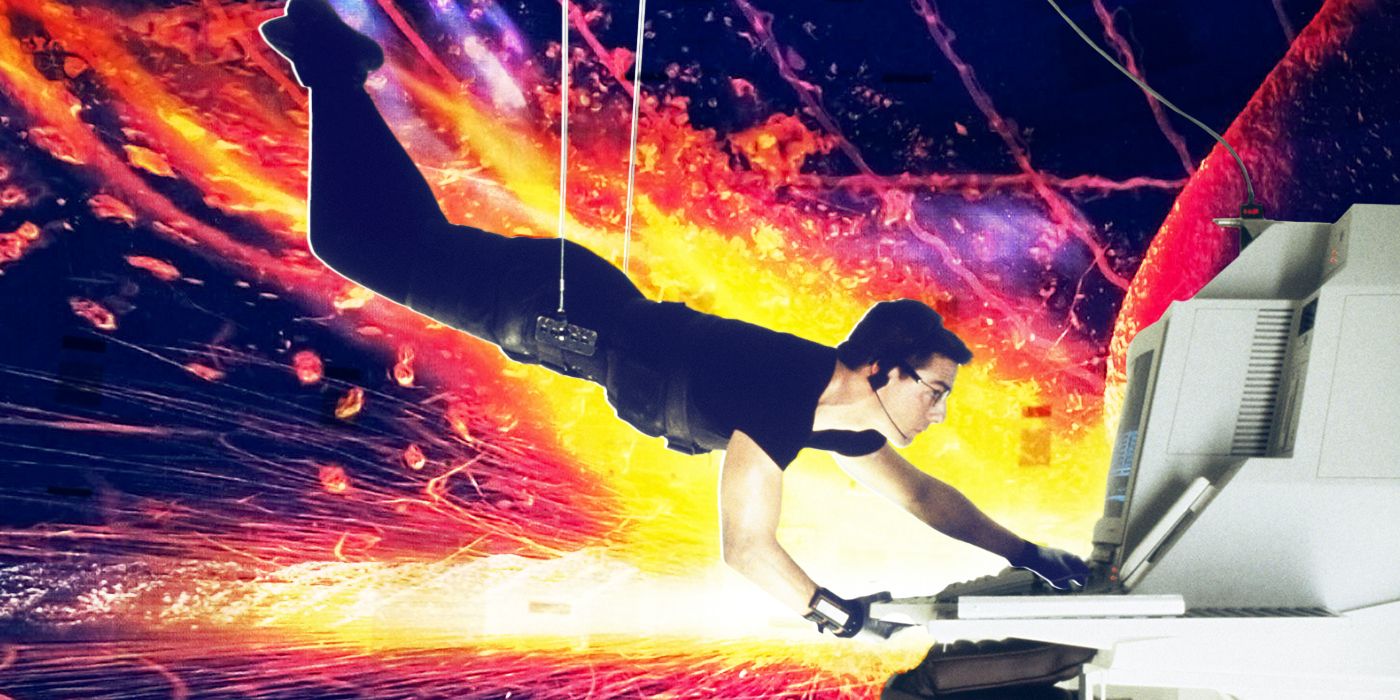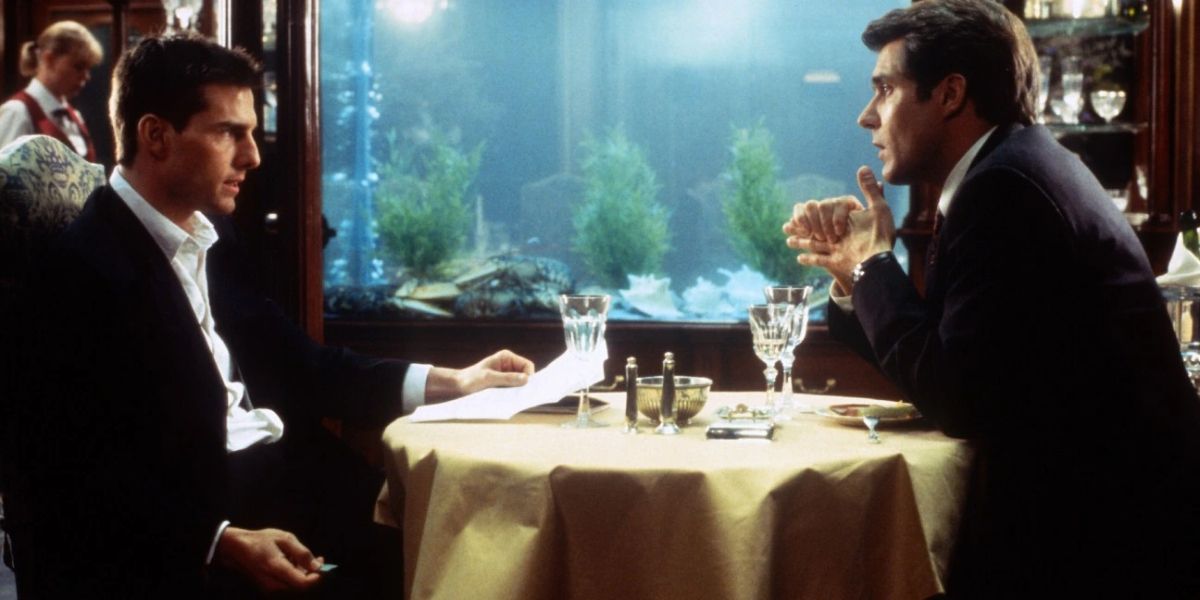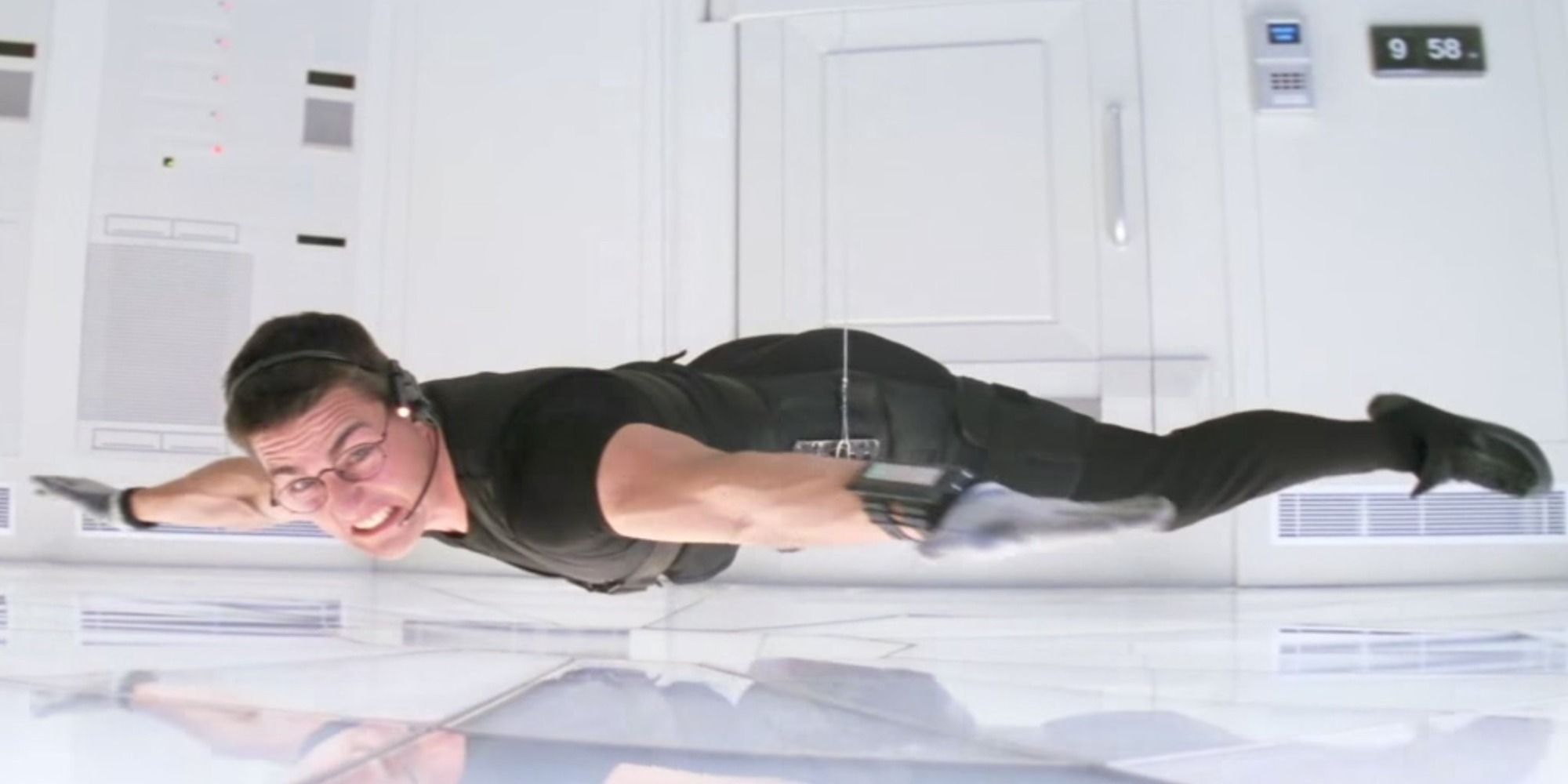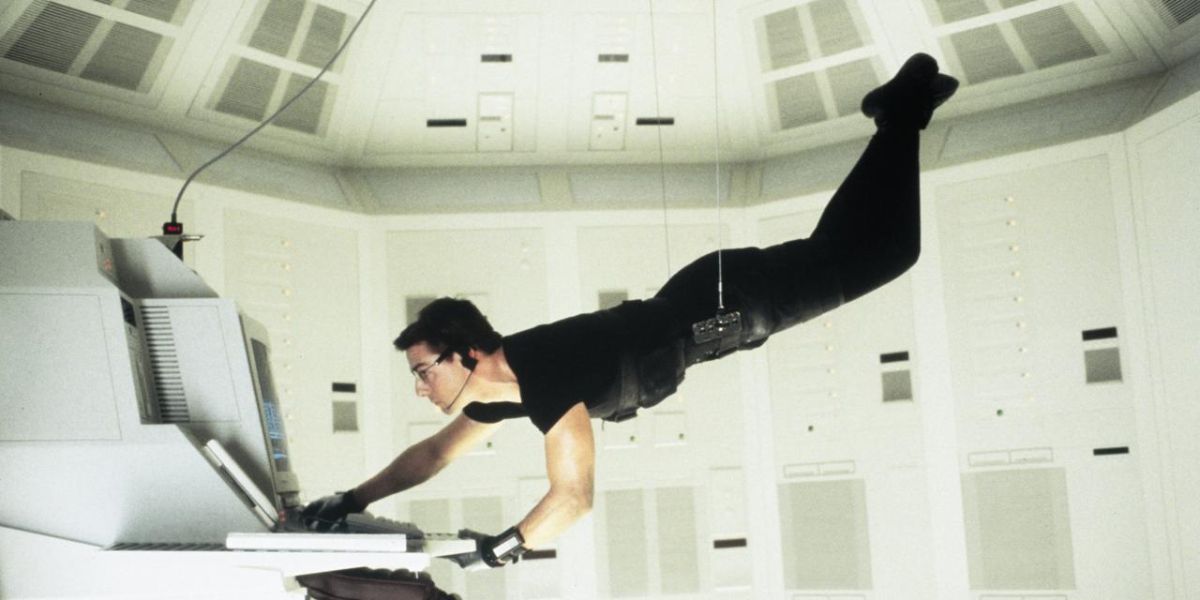The Big Picture
The lucrative Mission: Impossible franchise has made its name on the ingenious clout of its action sequences, and rightly so. Almost every sequel has excelled at the trickiest of dilemmas: surpassing its predecessor with entertaining cleverness and a scale of execution that’s practically unmatched. Beyond the fun spy antics and found family banter, viewers have been treated to increasingly wilder stunts performed by Tom Cruise over the years. The latest franchise installment, Mission: Impossible – Dead Reckoning Part One gave us Cruise motorcycling off a cliff for crying out loud! With more movies on the horizon, it’s wild to imagine things getting even crazier than that stunt. The dedication of cast and crew alike has cemented this particular franchise as one of, if not the, best action series of all time. However, sometimes the simpler things are the best. A crucial set piece from one of the first films remains brilliantly effective thanks to numerous overlapping factors. There’s no doubt that the effort it took to achieve the newer Mission: Impossible stunts is astonishing, but there’s also something grounded, human, rough, and grungy about this older heist that even Cruise hanging off a moving airplane can’t surpass.
What Is ‘Mission: Impossible’ About?
Released in the summer of 1996, the semi-convoluted plot of the first Mission: Impossible sees a baby-faced Ethan Hunt on the run from his own task force after a mole within the IMF (Impossible Mission Force) assassinates his team during an operation and frames him for the act. Hunt must clear his name through increasingly difficult means and discover who used him as a scapegoat. Stealing a list that exposes the names of all undercover CIA operatives (the NOC list) becomes essential to this endeavor. Aiding Hunt in his quest are Claire Phelps (Emmanuelle Béart), another surviving member of his team, and former IMF agents Luther Stickell (Ving Rhames) and Franz Krieger (Jean Reno), a hacker and a pilot extraordinaire, respectively.
Director Brian de Palma’s work prior to kicking off a nearly thirty-year series included psychological thrillers like Sisters, Obsession, Dressed to Kill, Blow Out, and Body Double, among many others. He notably channeled his primary influence Alfred Hitchcock by emphasizing a “Hitchcockian” atmosphere he personalized enough to become recognizably and distinctly “de Palma-ian.” Indeed, de Palma’s disciplined pacing eviscerates the screen. Unlike subsequent entries, Mission: Impossible is of a particularly old-fashioned ilk: an action-adventure espionage drama that emphasizes its espionage side instead of substituting it with irrationally awesome mask reveals scattered in between action sequences. The first film is a tight, taut thriller that recalls classic Hollywood thrillers of yore and reflects de Palma’s methodical style to its ultimate benefit.
Why Is ‘Mission: Impossible’s CIA Heist One of the Franchise’s Best?
The set-up for Mission: Impossible’s heist scene is as complicated as it is intimidating. Hunt, a wanted man, must steal the NOC list straight out of the CIA’s headquarters in Langley, Virginia, and that’s no cakewalk. The list sits on a ’90s-era computer in a dedicated vault room. Only one analyst, William Donloe (Rolf Saxon), is permitted inside. He has to pass a series of security checks: a voiceprint identification, a six-digit access code, a retinal scan, and a double electric key card lock. Once inside the vault, any sound above a stage whisper and the temperature rising a single degree triggers a building-wide lockdown and traps potential thieves inside. There’s an air conditioning duct thirty feet above the floor, but it’s guarded by laser wires. If that wasn’t enough, when Donloe isn’t in the room, any weight increase on the monitored floor sets off the same alarms. The increasingly ridiculous mental strategizing required to bypass comprehensive security measures is as expected and fun a part of Mission: Impossible as anything else.
However, several factors keep this particular heist compelling despite its “simpler” nature (in comparison to breaking into the Kremlin, for instance). For starters, the security hoops Hunt and his makeshift team jump through aren’t one-and-done obstacles in the spirit of a video game. Everything is a balance of factors constantly at risk of tipping the mission into failure. Once Hunt and Krieger achieve step one (infiltrate the CIA building thanks to a fake fire alarm), they ascend the ductwork and deactivate the laser pit from above. Then Krieger lowers Hunt into the vault room via a body harness on cables and spends minutes holding him suspended by the strength in his arms. A temperature monitor measures the room to the percentile and Hunt wears a decibel meter on his wrist. Something as commonplace as a sneeze or a cable dragging against metal ductwork qualifies as loud enough to be dangerous. Hunt’s movements must be cautiously precise as well, whether it’s lifting the duct hatch, inserting a floppy drive, or clacking on keyboard keys. Even composer Danny Elfman’s score drops out, making the silence almost oppressive.
There’s also the technician to deal with. If Donloe catches them in the act, it’s over. A disguised Claire discreetly drops a vomiting drug into Donloe’s coffee cup and places a tracker on his shoulder. Hunt’s left waiting for Donloe to rush to the bathroom before Hunt can make his move, and then he works around the analyst’s failed attempts to return. Wisely, de Palma uses these numerous loopholes as an excuse to cut between the different locations and strain the scene’s tension to its breaking point. Multiple set pieces emphasize just how wrong anything could go on a split second’s notice, and Hunt’s precise movements demand the sequence take its time to build despite speed being narratively of the essence. (Who knew using a floppy drive could be so intense!)
How Does ‘Mission: Impossible’s Vault Scene Keep Our Attention?
Brian de Palma further heightens the palpably breathless suspense when things inevitably go wrong. As Krieger strains to keep Hunt aloft, a rat scuttles close to Krieger. Its clattering movement in the ductwork echoes loud enough to register on the sound meter, and Krieger briefly loses his grip. Hunt plummets and stops just inches above the floor, his limbs splayed and wildly swinging to keep himself steady. As he does, one bead of sweat trickles down his glasses. It catches on the rim, providing a reprieve, until a second bead slides down and sends the first dropping. Somehow, Hunt catches the sweat in his palm before it hits the floor and keeps his body from triggering the floor’s pressure-sensitive alarm. All the while, Donloe might return at any moment. Luther tracks the analyst’s location and appraises Hunt of his status in an urgent whisper.
These factors lend the heist a decided weight that’s often lost in the Mission: Impossible franchise’s progressively ludicrous (if delightful) grandeur. Something as small as a single bead of sweat has consequences. There’s no fancy equipment to zip Hunt up and down. It’s just an exhausted Krieger barely maintaining his grip on the cable as the veins in his arms pop. Equipment unreliability poses an additional risk: de Palma uses teeth-gritting close-ups of the cable connected to Hunt’s holster as it drags and frays against the duct opening’s metal edge. And for all that Hunt navigates with acrobatic grace through the air, he feels heavy. Viewers know the weight of his potential failure and just how difficult a time Krieger’s having to keep him afloat.
Once Hunt’s seemingly safe and sound, de Palma doesn’t let audiences off the hook. Oh, no, he’s not that merciful a director. Krieger’s knife slips from his grasp, drops in slow motion, and lands blade side-up in Donloe’s desk just as his return disables the alarms. Watching this sequence after six subsequent films enhances the tension in a fascinatingly meta way because we’re used to an Ethan Hunt who manages the impossible stunt every time. It’s his job description! The Hunt of 1996 is still young and inexperienced with no reliable team backing him up. This kid is fighting the entire system with the barest resources, and he made it out of Langley by the skin of his teeth.
Mission: Impossible is a deluge of tangibly sharp tension, and it’s an interesting film for a franchise that wouldn’t establish its cultural and stylistic identity until arguably the third and fourth installments. It’s a down-and-dirty thriller executed with a flourish. No matter how tremendous Tom Cruise’s recent feats are, the grounded nature de Palma brings to the entire film makes a heist that nowadays reads as “simple” on paper as arduously stressful as any skyscraper climb or helicopter chase.









